Fort Worth, Texas offers visitors a variety of free activities and attractions to enjoy without emptying your wallet.
| Attraction | Highlight |
|---|---|
| Cultural District | Free museum admissions showcasing a wide range of art. |
| Stockyards National Historic District | Experience cowboy culture and live cattle drives. |
| Walkable Neighborhoods | Explore Magnolia Avenue and West 7th Street’s vibrant scenes. |
| Sundance Square | Enjoy architecture, outdoor performances, and public art. |
| Botanic Garden | Wander through 109 acres of diverse gardens. |
| Trinity Trails | Over 60 miles of trails for walking, biking, and equestrian. |
| Outdoor Performances | Free festivals, concerts, and movies in public spaces. |
| Historic Sites | Discover Fort Worth’s past at Log Cabin Village and Thistle Hill House Museum. |
From world-class art museums to cowboy culture, lush gardens and parks to architectural wonders, you can pack your itinerary full of free things to see and do during your Fort Worth getaway.
The Cultural District
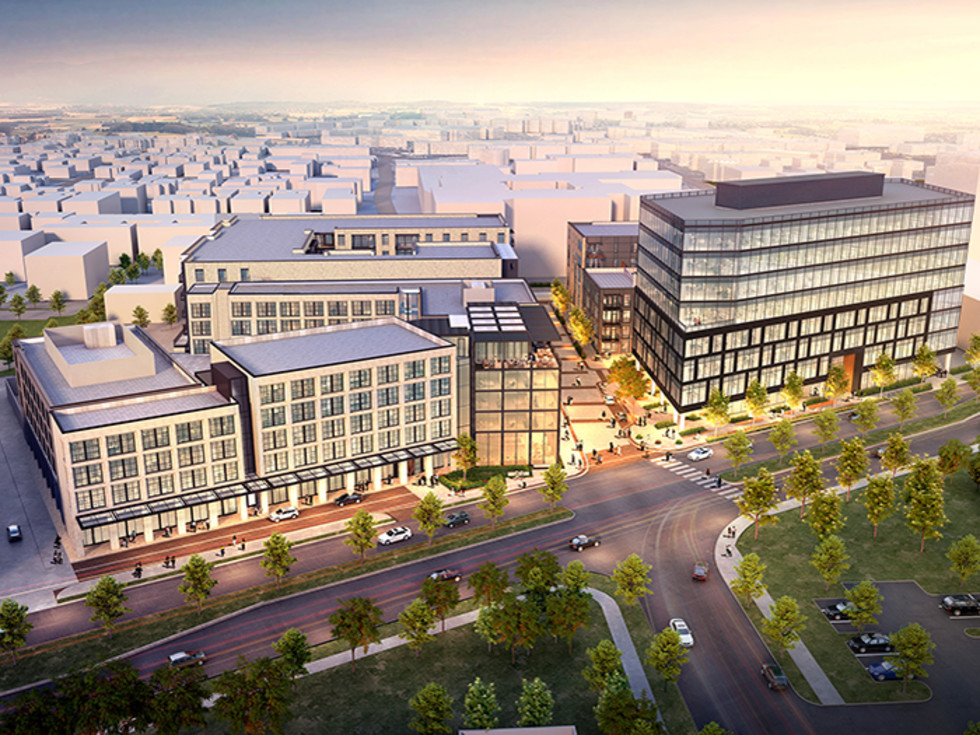
Name and Location: Fort Worth’s Cultural District spans 375 acres southwest of downtown, concentrated among Camp Bowie Blvd, Montgomery St, University Dr & 7th Ave.
History and Significance: Zoned in 1973 to preserve and develop arts/culture institutions, today the district contains world-class museums, performance halls, gardens, educational facilities and civic attractions that celebrate Western heritage through art, nature and architecture.
What to Expect: Visitors explore acclaimed museums like the Kimbell and Modern Art Museum, immerse in the Botanic Gardens, catch performances at Casa Mañana theater, admire architecture and public art among reflective lagoons and green spaces during the day or when lit up at night.
Visitor Information: Most museums open 6 days a week, closed Mondays. Gardens/outdoor areas open daily. Free public parking available around the district.
Immerse yourself in arts and culture in the acclaimed Cultural District in downtown Fort Worth. Three major art museums offer free general admission, allowing you to explore extensive collections spanning classics to contemporary works.
Kimbell Art Museum
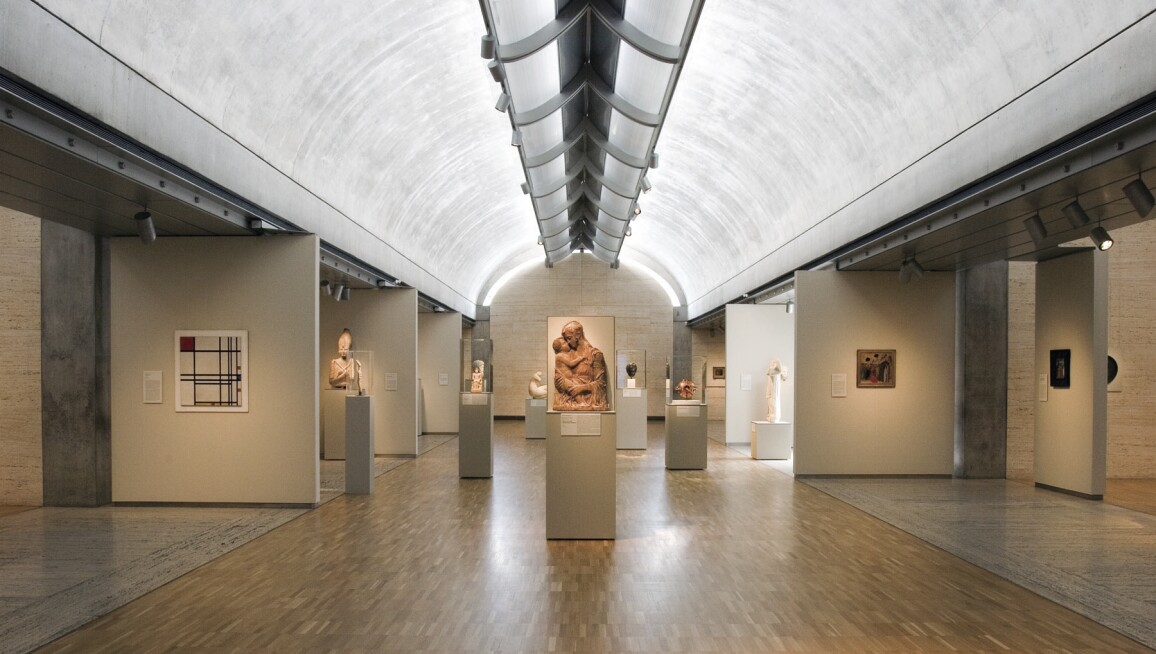
Name and Location: The Kimbell Art Museum is located in Fort Worth’s Cultural District at 3333 Camp Bowie Boulevard.
History and Significance: Founded in 1936 when Kay Kimbell left funds for an art museum, the renowned Louis I. Kahn designed the building, which opened in 1972. The Kimbell holds one of the best small art collections globally.
What to Expect: The museum showcases European works from antiquity to modern, as well as Asian, African and Precolumbian pieces. Special exhibitions are also on display in the Kahn and Piano pavilions. An auditorium, restaurant, and gift shop are on site.
Visitor Information: Open Tuesday-Sunday 10AM–5PM, until 8PM on Fridays. Adult admission is $18.
The Kimbell Art Museum houses stunning architecture and over 350 pieces in its permanent collection. Walk through its stainless-steel building designed by famed architect Renzo Piano and the adjoining vaulted, concrete structure by Louis I. Kahn. Admire European masterpieces like Fra Angelico gold-leaf paintings and Monets. Don’t miss seeing the only Michelangelo painting found in the Western Hemisphere.
Modern Art Museum
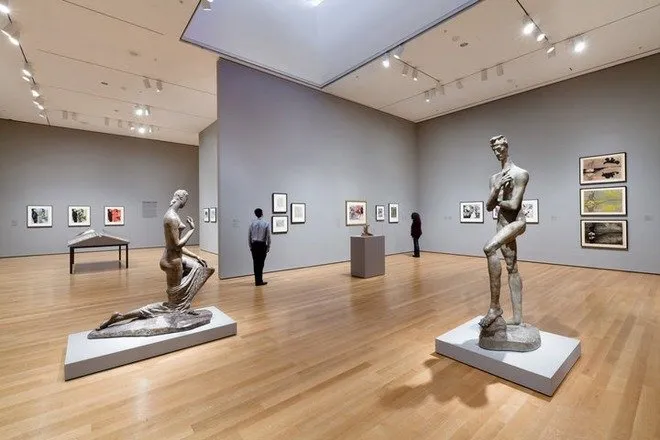
Name and Location: The Modern Art Museum of Fort Worth is referred to as The Modern. It’s located at 3200 Darnell Street in the city’s Cultural District.
History and Significance: Designed by Tadao Ando, The Modern opened in 2002 to house post-WWII art focused on American artists, including major works from Picasso to Andy Warhol.
What to Expect: Visitors view modern and contemporary exhibits that rotate every three to six months in galleries with 40-foot ceilings and outdoor sculptures. There is also a theater, shop, and cafe on site.
Visitor Information: Closed Mondays and holidays. Entry is $16 for adults, with half-price admission on Friday evenings after 4PM.
Discover why the Modern Art Museum of Fort Worth earned the nickname “Texas’s Museum of Modern Art.” Spanning over 53,000 square feet, the airy, five-pavilion space displays stellar contemporary and modern art. Stand beneath massive Andy Warhol prints, be intrigued by a life-sized Egyptian sarcophagus sculpture by British-Nigerian artist Yinka Shonibare, and contemplate a vibrant Jackson Pollock drip painting.
Amon Carter Museum of American Art
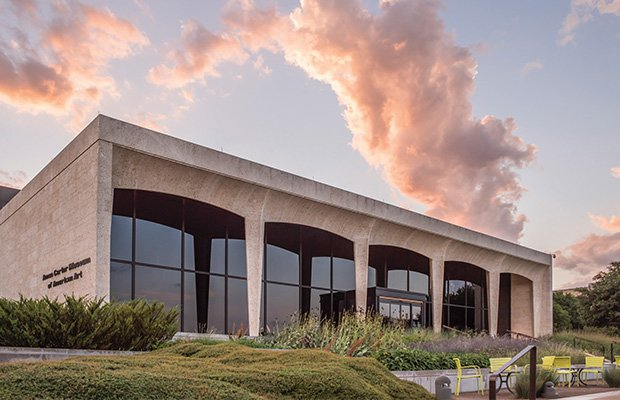
Name and Location: The Amon Carter Museum of American Art is located in Fort Worth’s Cultural District at 3501 Camp Bowie Blvd.
History and Significance: Founded in 1961 by Amon G. Carter to house his 400-piece collection of American art, the museum now holds over 50,000 objects from the early 19th century to the present day across paintings, sculpture, photography and works on paper.
What to Expect: Visitors view one of the foremost collections of American art in the country, including iconic paintings and photographs of the American West, as well as contemporary works and special national exhibitions inside and outside the museum’s tranquil Philip Johnson-designed building.
Visitor Information: Free admission Tuesdays-Sundays 10AM–5PM, closed Mondays except for holidays. Reservations recommended for weekday visits.
The Amon Carter Museum of American Art impresses with one of the most comprehensive collections of American art in the country. Walk chronologically through the exhibits to follow the evolution of art across the 19th and 20th centuries. Notice how styles and themes shift from early pastoral scenes to later modernist abstract works. Don’t miss seeing iconic pieces like Winslow Homer’s pivotal work Fox Hunt and massive wall-sized photorealistic paintings in the Miami Collection.
The Stockyards National Historic District
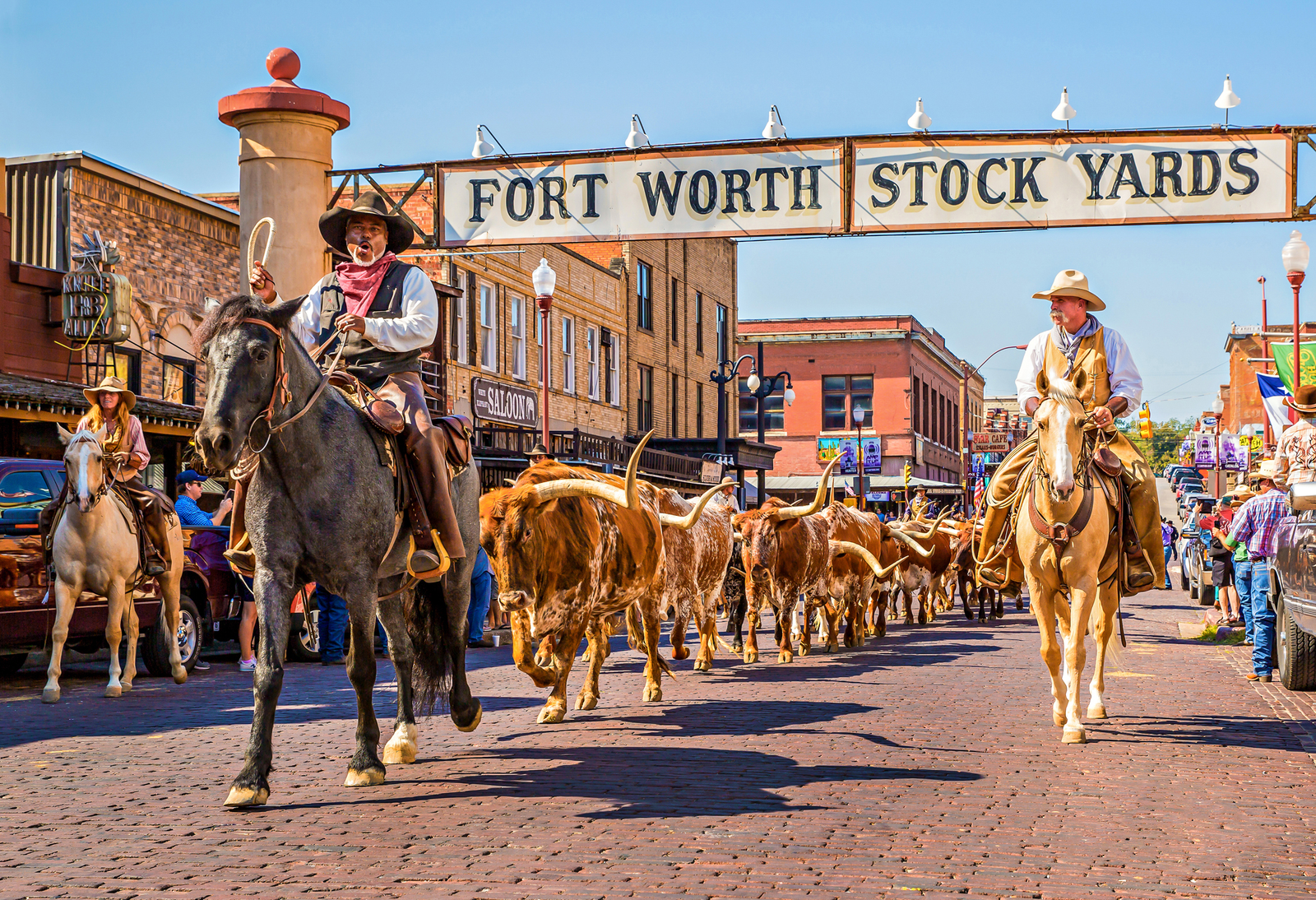
Name and Location: The Stockyards National Historic District is located in the Northside of Fort Worth, Texas. It encompasses 45 acres along Exchange Avenue.
History and Significance: Established in 1876 when several livestock pens opened around the railroad, the Stockyards became one of the largest livestock markets in the US. Today, it preserves Fort Worth’s Western heritage and history. The district was declared a National Historic Landmark in 1976.
What to Expect: Visitors experience rodeos, cattle drives, shop for Western wear and items, dine at steakhouses and saloons, and explore historical buildings and museums capturing the district’s history as a livestock market. Family-friendly cowboy culture abounds.
Visitor Information: The Stockyards are open daily. Guided walking tours are available to learn more about the district’s history.
Step back in time to the late 19th century heyday of the cowtown that earned Fort Worth the nickname “Where the West Begins.” The Stockyards National Historic District provides a free and fascinating glimpse into Fort Worth’s cattle drive history and cowboy culture.
Wander down Exchange Avenue, the cobblestone main drag lined with Old West architecture housing restaurants, shops, and saloons today. Catch a glimpse of the Chisholm Trail that millions of cattle traversed during the iconic dusty cattle drives. Pop into the Livestock Exchange Building to see the old livestock pens and auction arena where cattle changed hands each day.
Every Friday and Saturday at 11:30am and 4pm, you can catch free live cattle drives right down Exchange Avenue. A mix of Texas longhorns and American paint horses trot by, hooves clip-clopping on stone, with whooping cowboys donning chaps and spurs in tow. Arrive early to snag a good spot for iconic photo ops.
Don’t miss the daily Fort Worth Herd cattle drive every morning at 11:15am, where you can see the longhorns thunder down East Exchange Avenue guided by cowhands and drovers towards the stock pens.
Cowgirl Hall of Fame
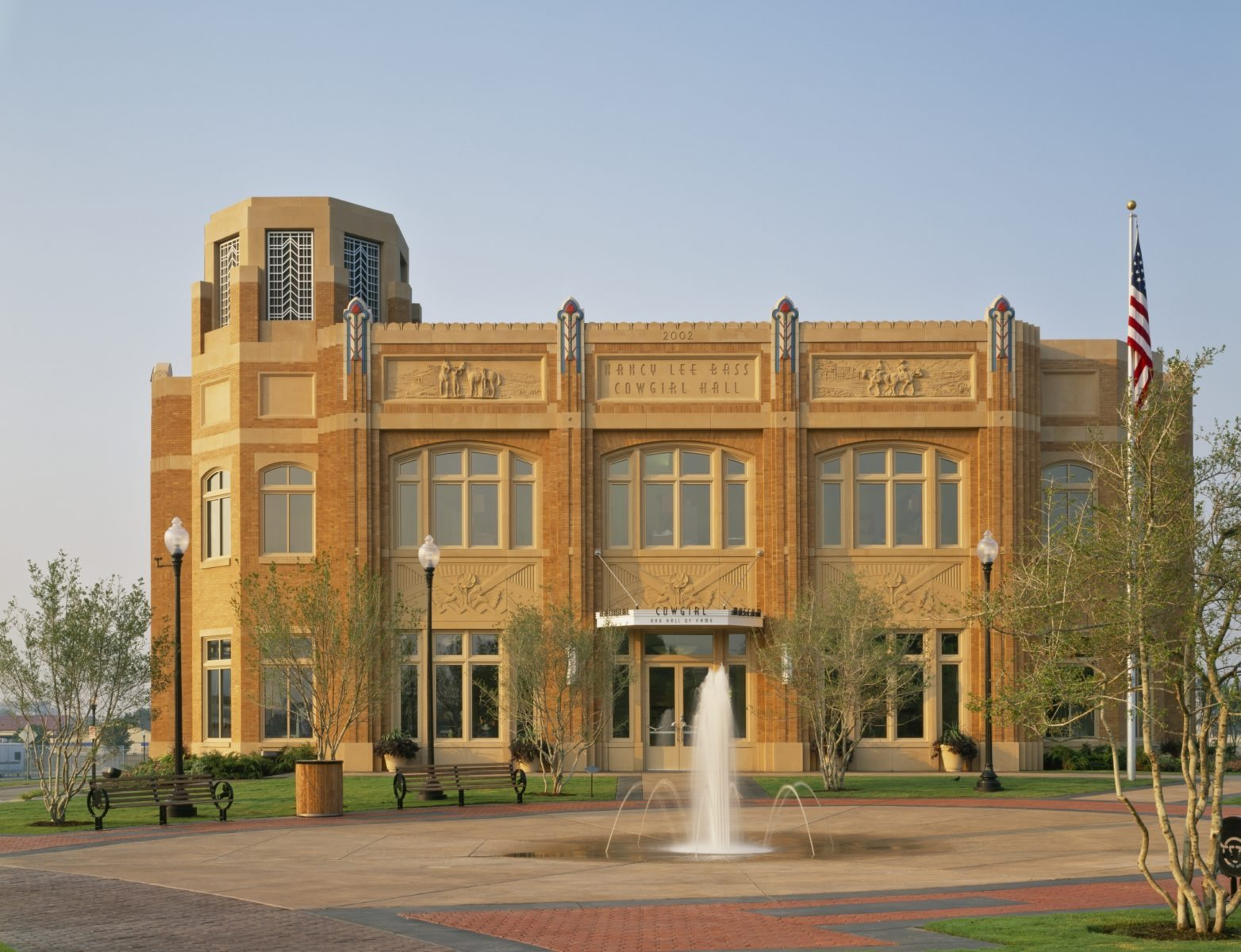
Name and Location: The National Cowgirl Museum and Hall of Fame is located in Fort Worth’s Cultural District at 1720 Gendy Street.
History and Significance: Founded in 1975, the museum honors pioneer women, ranchers, artists, and modern-day champions in rodeo and raising livestock. Inductees include Annie Oakley, Sacagawea and Dale Evans.
What to Expect: Visitors explore rotating exhibits, a sculpture garden, theater presentations, and an interactive area. The museum store offers one-of-a-kind cowgirl style items.
Visitor Information: Open Tuesday-Saturday 10AM-5PM, Sunday 12-5PM. Admission is $10 for adults. Guided tours offered daily.
Gain insight into influential pioneer women of the American West at the National Cowgirl Museum and Hall of Fame. This illuminating museum honors rodeo cowgirls and women who made their mark in areas from art to science. Learn about trailblazing figures like sharpshooter Annie Oakley, painter Georgia O’Keefe, and Supreme Court Justice Sandra Day O’Connor. Admission to the museum is free on the last Saturday of January, June, and September.
Walkable Neighborhoods
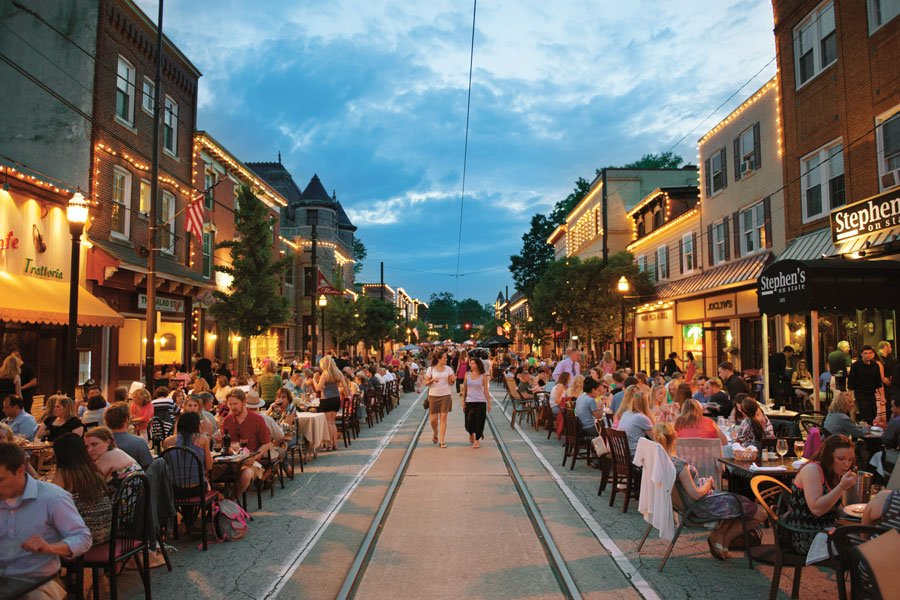
Beyond the museums and Cowtown, Fort Worth offers several appealing neighborhoods brimming with character worth exploring on foot for free.
Magnolia Avenue

Magnolia Avenue
History and Significance: Magnolia Avenue is home to a vibrant independent and local small business corridor along a leafy historic street lined by architectural treasures from bungalows to multi-stories now housing cafes, boutiques and art galleries.
What to Expect: Strollers browse one-of-a-kind indie shops, explore exhibit spaces and stop for Instagram-worthy fare at chic Magnolia eateries, bars and coffee shops radiating cool revitalized character through preserved buildings connected by shaded sidewalks, bike paths and lounges.
Visitor Information: Free 2-hour parking; The Shops at 703 Magnolia central lot offers free spaces. Dashes and buses connect Magnolia to downtown. Many stores open 11AM-6PM.
Stroll down vibrant Magnolia Avenue, one of Fort Worth’s most eclectic neighborhood strips. Today Magnolia Avenue is known as the city’s “Hippest Hometown Street,” but it has a storied past. It was once a seedy stretch of saloons and brothels catering to cowboys driving cattle through during the peak cattle drive era. The neighboring area transformed into a thriving Hispanic neighborhood in the mid-20th century.
Wander Magnolia Avenue today to soak up its artsy atmosphere, browsing the boutiques, galleries, and cafes housed in the restored brick buildings. Look down at your feet to spot the painted guitar sidewalk sculptures created by local artists guiding your way.
West 7th Street
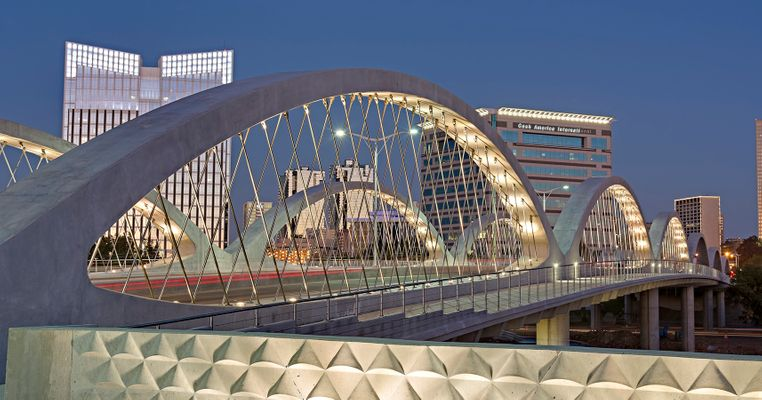
West 7th Street
History and Significance: Developed as a leased neighborhood modeled after Austin’s popular 2nd Street District, West 7th north of downtown transformed abandoned warehouses into a trendy pedestrian hub mixing locally-owned eateries, shops, apartments, parks and nightlife.
What to Expect: patrons browse home decor stores and artisan boutiques before drinking and dining along bustling extended outdoor patios lining the brick-paved corridor located beside the Trinity River and its extensive trail system. Seasonal events like markets happen routinely.
Visitor Information: Free garage parking garages onsite. Walk 7th runs L-shaped from Currie to Foch streets. Many businesses open 10AM-9PM routinely.
The West 7th Street district situated west of downtown packs a punch of trendy vibes. Get your retail therapy fix browsing the chic locally-owned boutiques, and grab a bite on a restaurant patio with a backdrop of colorful murals. The neighborhood springs to life on summer weekends with a bustling farmer’s market every Saturday. Don’t miss seeing the striking 30-foot sculpture “Finding Glory” in the Renaissance Square green space, formed from stainless steel horse silhouettes in motion.
Sundance Square

At the heart of downtown you’ll uncover Sundance Square, a pedestrian-friendly 35-block district. Sundance Square dazzles visitors with its architecture spanning Victorian era buildings to sleek high-rises with glossy facades. Grab a bench in Sundance Square Plaza to relax amidst the compound’s vibrant mix of restaurants and retail nested around an outdoor performance venue and two majestic chalk white basswood trees glittering with twinkling lights.
Free Parks
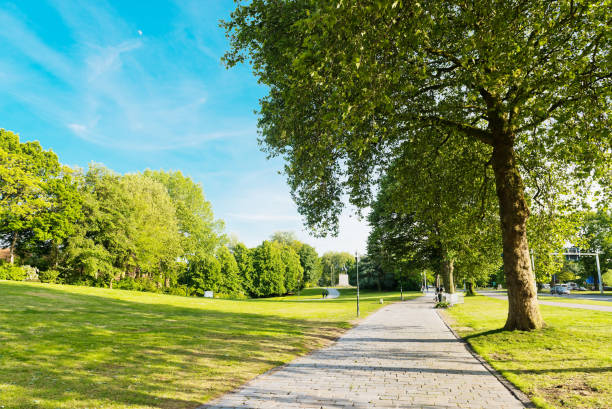
Free Parks
History and Significance: Sundance Square’s open community gathering spaces provide areas to sit, eat and relax across the 14-block pedestrian district through shaded spots like Sundance Plaza’s clusters of red umbrellas, the tree-enclosed Courtyard and Gathering Place lawn anchoring Main Street.
What to Expect: Visitors linger with takeout food, read, work remotely or people watch from available tables, benches, ledges and lawns tucked between downtown streets for momentary escapes surrounded by planters, flowers, trees and tranquil water features like fountains accented by public art.
Visitor Information: Sundance Square’s public parks span from 3rd to 4th streets bordered by Main, Houston, Commerce and Jones open daily without any entry requirements.
Fort Worth holds over 40 picturesque public parks offering lush pockets of leisure, from petite neighborhood green spaces to sprawling recreation areas.
Fort Woof Dog Park

Fort Woof Dog Park
History and Significance: Opened by Sundance Square Management in 2013, Fort Woof offers a members-only dog park in the heart of downtown as the only private urban dog park in the country as an amenity for residential tenants and nearby professionals.
What to Expect: Dog members access a turf lawn space to play fetch, socialize pets in an enclosed environment and provide relief for dogs boarded alone all day while owners network with fellow dog lovers. Daily guest passes available.
Visitor Information: Located on the 3rd level of the Commerce Street Public Garage. Membership runs $60 annually. Open 7 days, dawn to dusk. Verify credentials at concierge desk.
Let your pup run free at Fort Woof off-leash dog park next to Gateway Park. At 12 acres, it provides plenty of room for dogs to roam and socialize. Separate sections cater to large and small dogs. Bring your pooch to play or let them make some new furry friends.
Botanic Garden
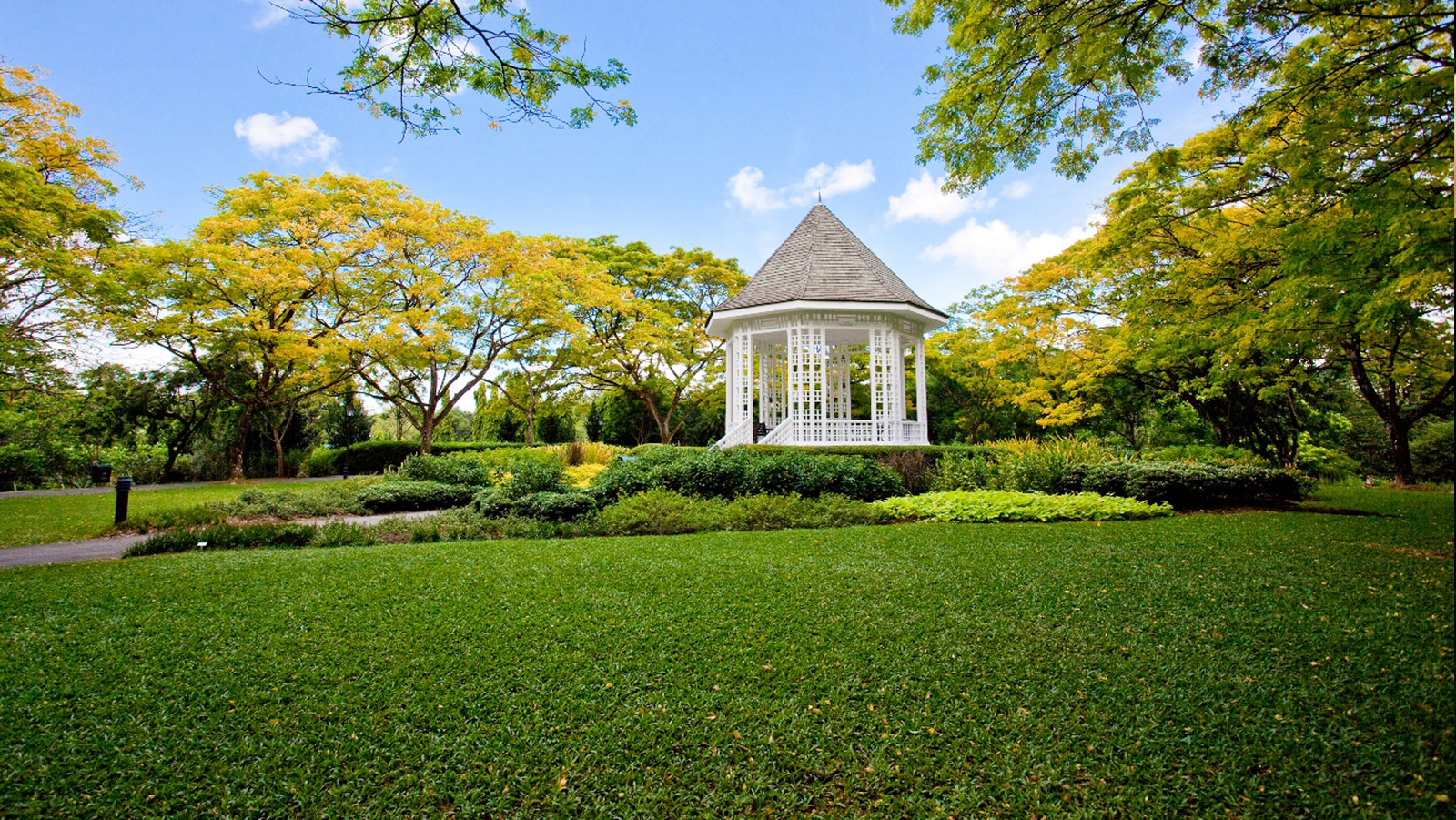
Name and Location: The Fort Worth Botanic Garden is located at 3220 Botanic Garden Boulevard next to Will Rogers Memorial Center.
History and Significance: Originally founded in 1934, today over 100 acres promote nature education and conservation with areas like the Rose Garden, Rock Springs and over 2,500 species across flower gardens, water features, specialized botanical collections, trails and seasonal exhibits evoking Texas’ diverse beauty.
What to Expect: Visitors walk trails past butterflies and outdoor sculptures, take classes nurturing plants/wellness and admire exotic specimens in richly themed areas alive with textures/colors memorializing Lucile Halsell Conservatory’s rainforest under glass domes while relaxing amid nature.
Visitor Information: Open daily 8AM-5PM in winter, as late as 8PM in summer. Entry is free on weekdays. Parking onsite.
Escape into an oasis spanning 109 acres at the Botanic Garden. This sprawling urban greenspace encompasses 21 specialty gardens like Japanese and rose gardens all open to explore. Check out exhibits in the visitors center highlighting gardening in Texas using native plants and water-wise landscaping.
Trinity Trails
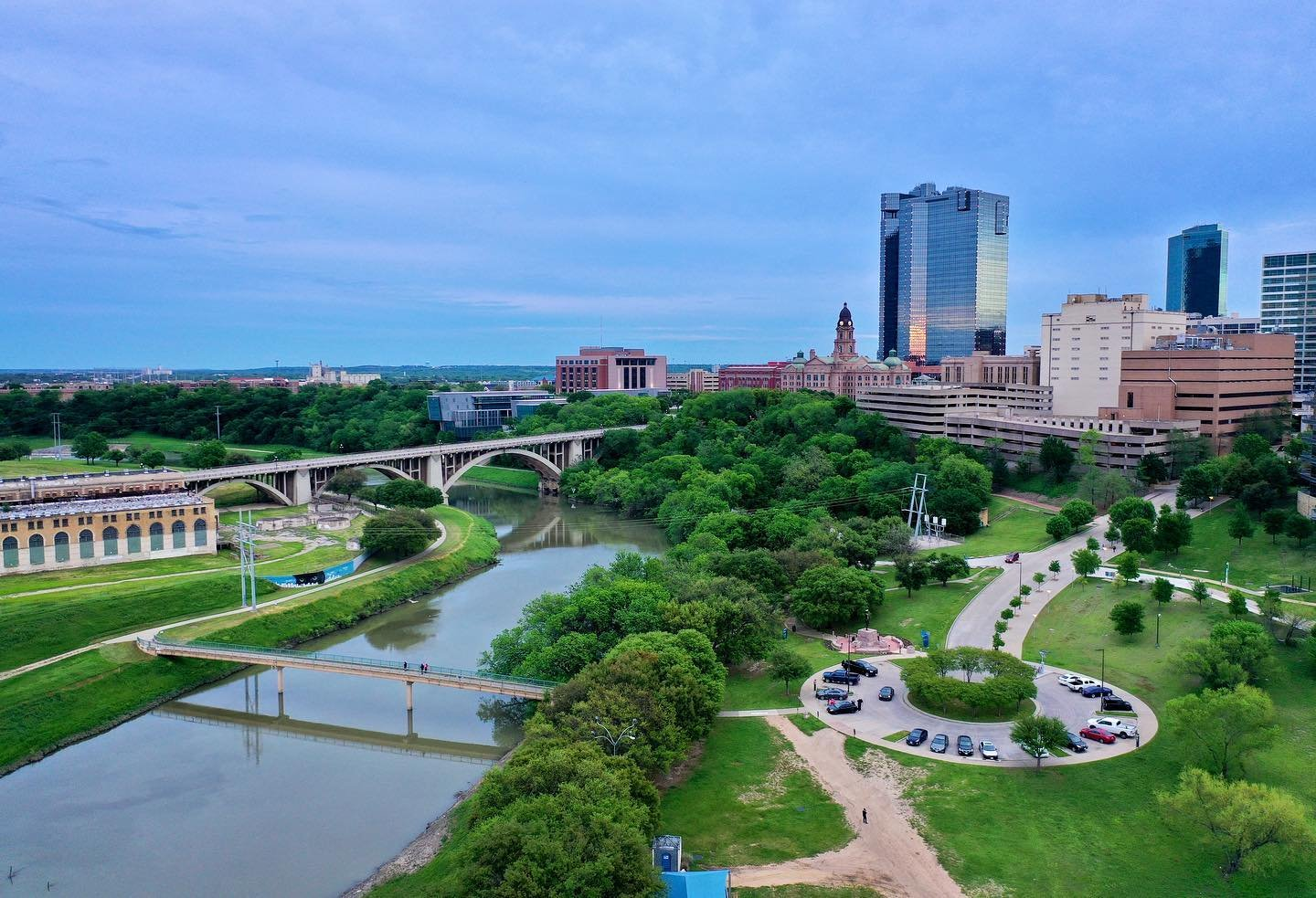
Name and Location: The Trinity Trails course through Fort Worth along the Trinity River waterway, offering over 40 miles of recreational paths for walking, running, biking and more.
History and Significance: Efforts to create a trail system date back to the 1960s. Today, the trails connect over 20 neighborhoods, parks, businesses and cultural attractions downtown, providing community green space and promoting active transportation.
What to Expect: Users traverse tree-lined trails by dramatic river views along paved paths, observation decks, fishing spots, sporting areas and public artworks. Part of the trails feature whitewater rapids for rafting.
Visitor Information: Trails are open daily 5AM-midnight with maps posted online. Some access points have parking, rentals available. Use is free.
Lace up your walking shoes or hop on a bike to soak up river and skyline views along the Trinity Trails system. Over 60 miles of trails let you traverse Fort Worth while getting some fresh air and exercise. Paved paths for cyclists and walkers, along with equestrian dirt trails, follow the paths of the West and Clear Forks of the Trinity River.
Outdoor Performances
When it comes to free events and performances, Fort Worth delivers. From festivals to concerts and movies, you can keep your calendar full without paying a cent.
Main Street Arts Festival

Main Street Arts Festival
History and Significance: Fort Worth’s free signature arts festival began in 1980, today spanning six blocks as one of the Southwest’s largest, ranking among the nation’s top outdoor fine arts events attracting artists and 280,000 attendees beside Sundance Square each April.
What to Expect: The 4-day showcase transforms Main Street into an outdoor gallery with food, live music and drinks beside 200 juried artists selling ceramics, sculptures, paintings and more as a beloved Fort Worth spring tradition uniting community.
Visitor Information: Held annually each April. 2023 dates are April 13–16th. Festival hours run 11AM-10PM Thursdays through Saturdays, 11AM–6PM Sundays. Free entry; costs to purchase artworks.
Every April, the Main Street Arts Festival takes over downtown. For over three decades, the juried fine arts festival has showcased painters, sculptors, jewelry makers, photographers and other visual artists from around the country. In addition to ogling the works by 400+ creatives, you can catch artistic dance and musical performances on stages without spending a dime.
Rockin’ the River

Rockin’ the River
History and Significance: Launched in 2014, the Rockin’ the River free summer concert series invites the public to Trinity Park along the riverfront on Thursdays from May to September for local and regional musicians beside food trucks, activities and city skyline views.
What to Expect: Spread out picnic blankets and lawn chairs to sway along with featured country, soul, funk performers like Jacob Flores and The Suffers fueling community dance parties by the Trinity River accompanied by dynamic city vistas, local craft beer and a festive feeling each evening from 6-10PM.
Visitor Information: Event dates are posted for May-September at trinityrivervision.org when updated. It takes place at Trinity Park off University and 4th Streets. Outside food and drinks allowed. Pets permitted.
Summertime offers free Rockin’ the River concert series every Thursday evening in June and July next to the Trinity River. Local and regional musicians liven up the outdoor event with genres spanning country to soul. Bring some picnic supplies and set up on the lawn by Panther Island Pavilion as the sun sets over the river.
Movies in the Square
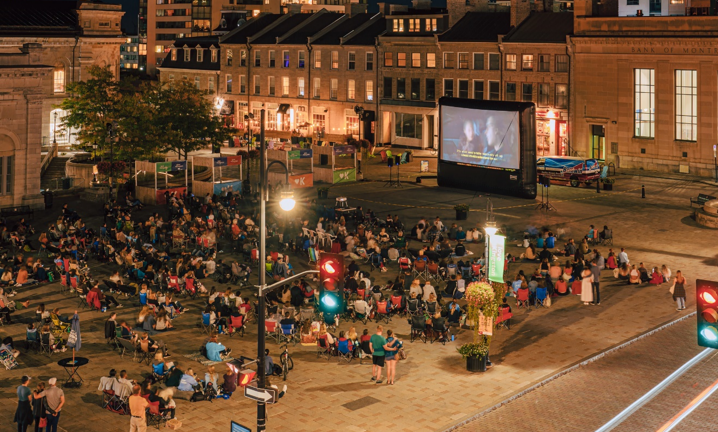
Movies in the Square
History and Significance: Since 1996, Sundance Square has projected hit films onto a huge outdoor screen facing Main Street over select summer nights for complimentary family entertainment from June through August as an annual tradition bringing together community.
What to Expect: Hundreds spread out picnic setups and seating each evening as the 35-foot tall custom movie screen plays blockbusters, classics, comedies and other hits for all ages including seasonal costume contests and activities beginning at dusk in Sundance Square Plaza downtown .
Visitor Information: 2023 film schedule and dates TBA in May. Concessions for food/drinks available nearby until 10PM when films end. Open seating starts 6PM. Pet friendly.
Cozy up for free movie screenings under the stars multiple Fridays over summer at Sundance Square Plaza downtown. Grab a spot on the lawn to catch family-friendly flick favorites. Previous features have included classics from The Sandlot to The Greatest Showman, along with blockbusters like Black Panther.
Historic Sites
History buffs can also get their fix in Fort Worth without paying admission thanks to these fascinating attractions.
Log Cabin Village
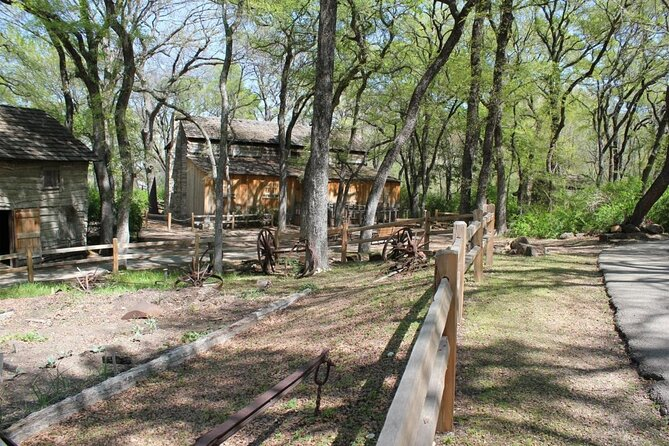
Log Cabin Village
History and Significance: Dedicated in 1976 within Fort Worth’s Botanic Garden, this living history museum authentically recreates 19th century settler life across an 8-acre 1840s village containing over a dozen log homes, artifacts and heritage plants cultivated by costumed interpreters employing era tools/methods.
What to Expect: Guests transport back in time exploring heirloom gardens or within rustic cabins, barns and structures outfitted with period furniture/tools. Seasonal activities interpret pioneering tasks from raising livestock to dye-making, candle-dipping, open-hearth cooking or quilting as hands-on leisurely tours.
Visitor Information: Log Cabin Village operates Tuesday-Saturday 10AM–4PM. Entry is $5 for adults with Botanic Garden admission. Annual members enter site for free. Reservations required for group tours.
At Log Cabin Village, you can get a glimpse into pioneer life in North Texas during the 1840s to 1890s. This living history museum centered around a collection of 19th century log cabins moved and preserved from across the state. Costumed interpreters bring frontier times to life demonstrating blacksmithing, quilting, and other trades and skills the structures’ past occupants would have undertaken.
Thistle Hill House Museum
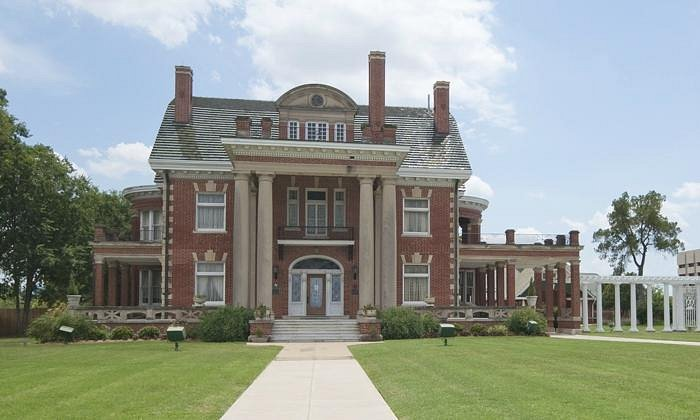
Thistle Hill House Museum
History and Significance: Built by cattle baron William Thomas Waggoner in 1903 as his estate, today the Johnson-Richey House offers tours inside the former mansion filled with original fixtures and furnishings reflective of Texas oil wealth during 20th century prosperity as one of few remaining historic mansions in Fort Worth from this era.
What to Expect: Costumed guides relay tales acquired with Waggoner’s fortune while touring 8 lavish rooms throughout this three-story brick Georgian Revival displaying family treasures like a Tiffany-accented foyer, authentic Napolean-era chandelier and stained-leaded glass alongside technological innovations modern for its day like an Otis electric elevator.
Visitor Information: Timed guided tours for ages 12+ run every 20 minutes Tues-Sat 10AM-2PM and Sun 1-3PM with last entry at 1:40PM. Admission runs $10; reservations required.
Travel back to the opulent Gilded Age at Thistle Hill House Museum, an elaborately restored historic mansion in the Historic Mistletoe Heights neighborhood. Oil tycoon William Thomas Waggoner had the sprawling Georgian-style residence built in 1903 to reflect his immense wealth. Today you can tour 23 rooms exhibiting original furnishings, fixtures, paintings and other possessions of the influential cattle rancher and philanthropist for free.
Conclusion
With plentiful parks, miles of trails, a vibrant urban center, charming neighborhoods, one-of-a-kind museums and galleries, and an endless array of free things to do, Fort Worth offers budget-conscious travelers and locals alike memorable experiences without emptying their wallet. Use this list to guide your adventures discovering Fort Worth’s culture, history, art and architecture, music and more without spending a dime.

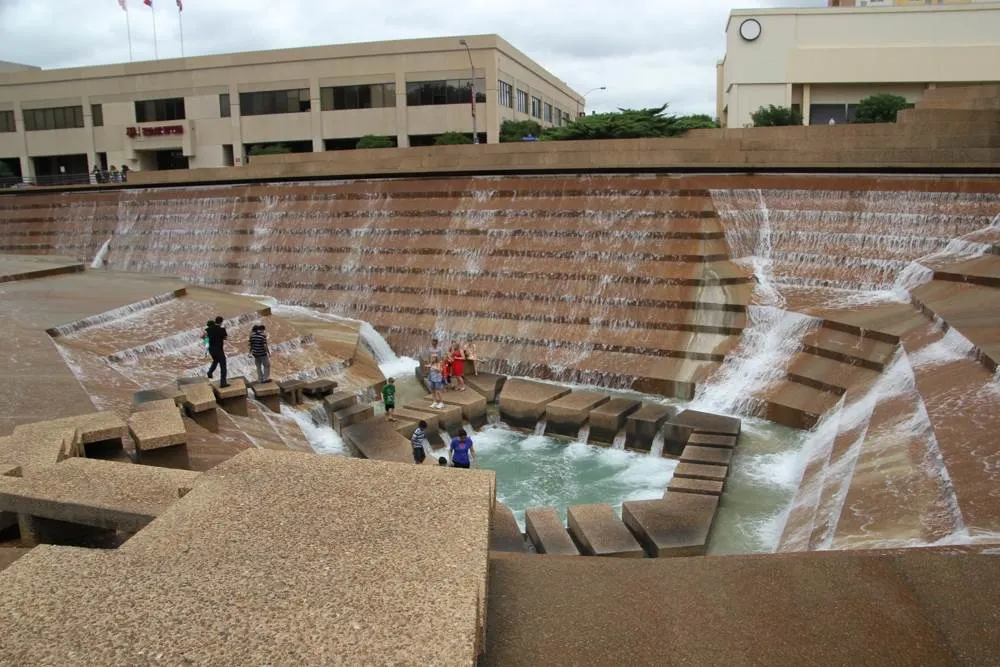

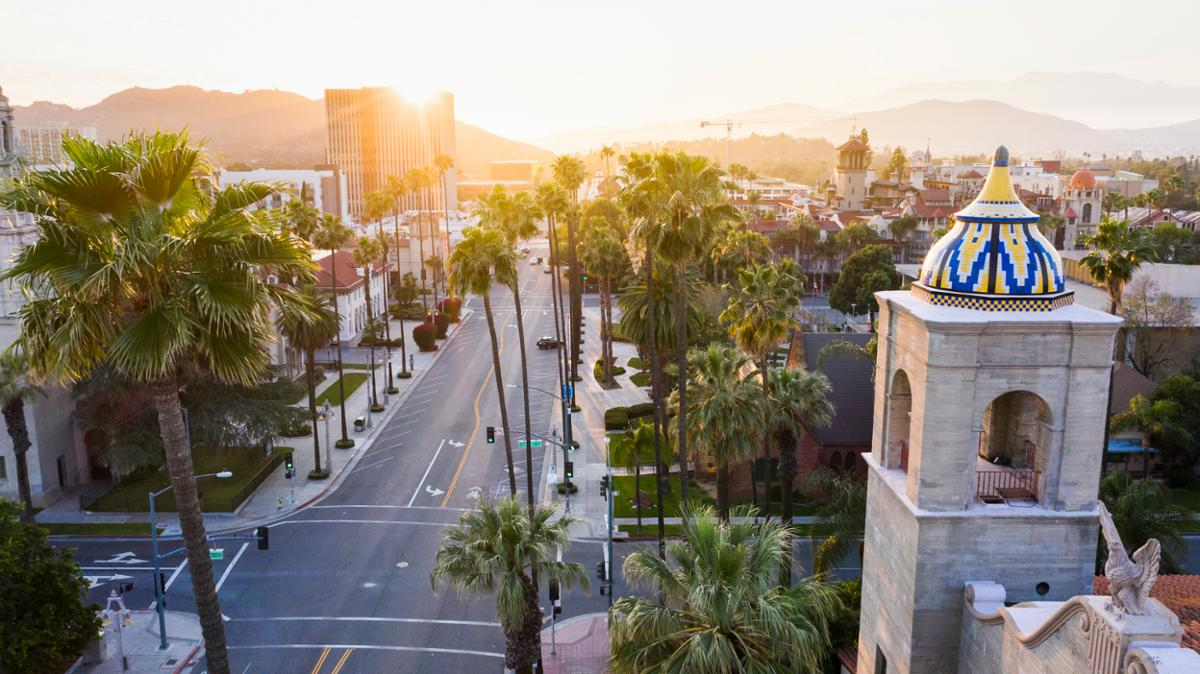

Join the Conversation